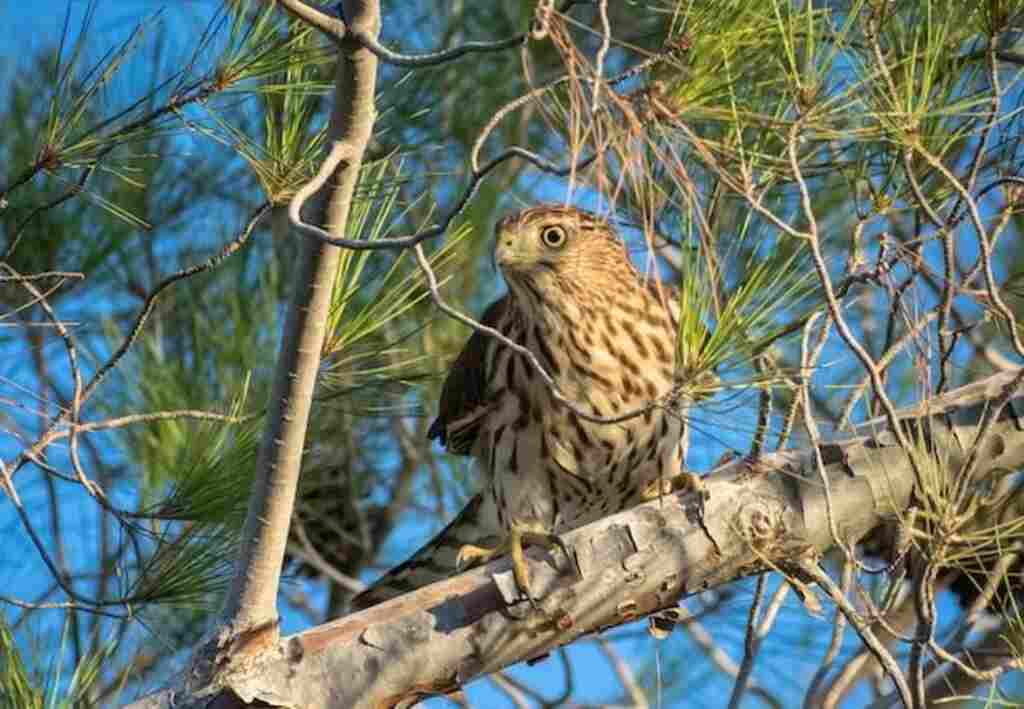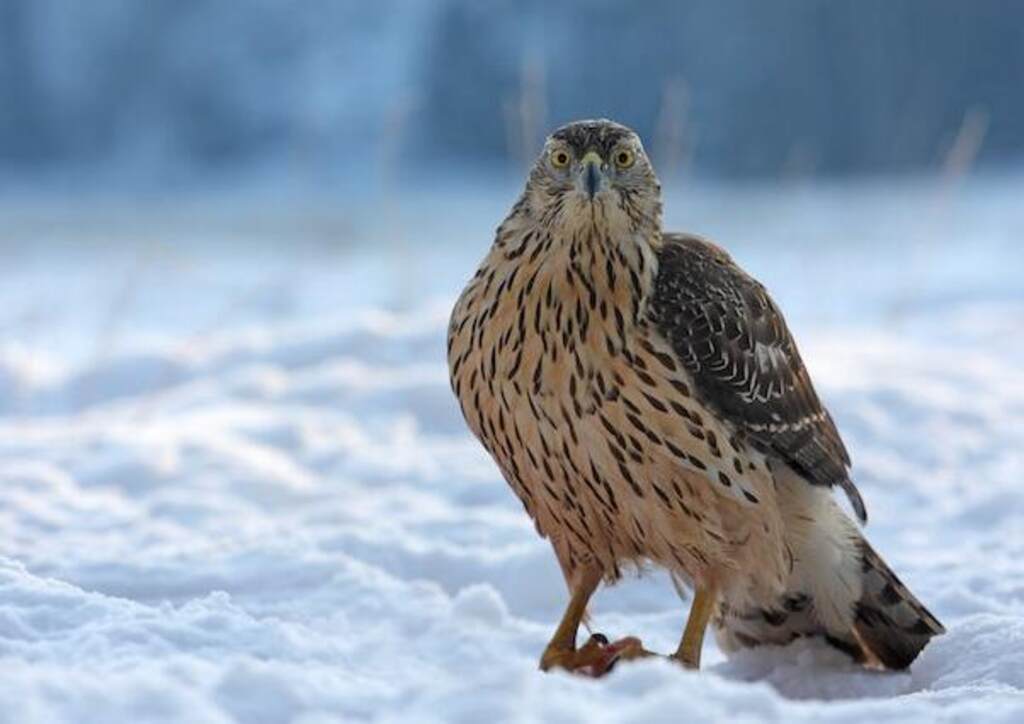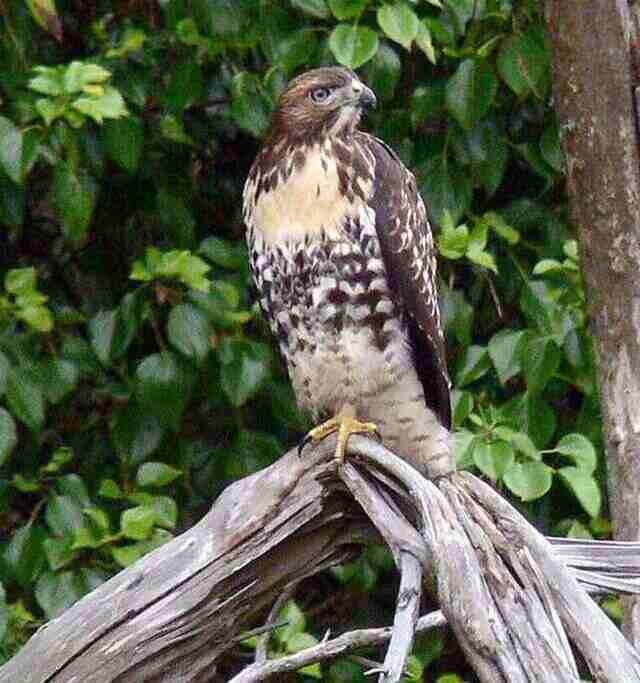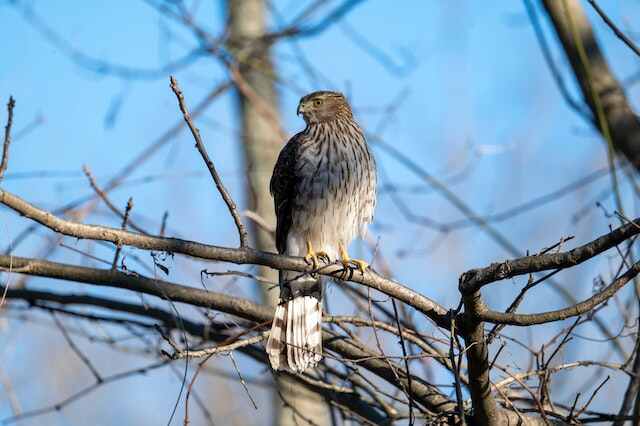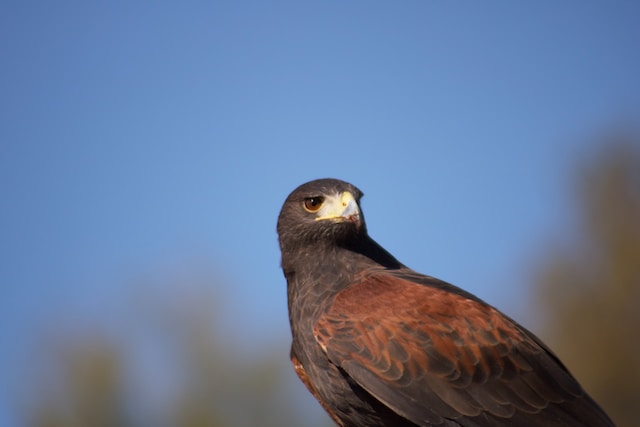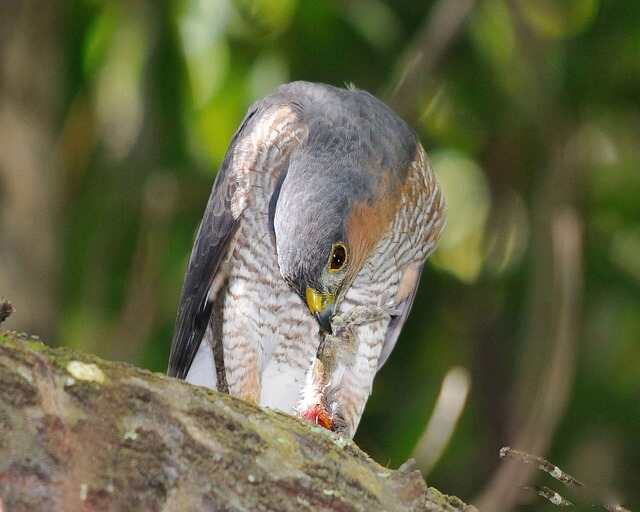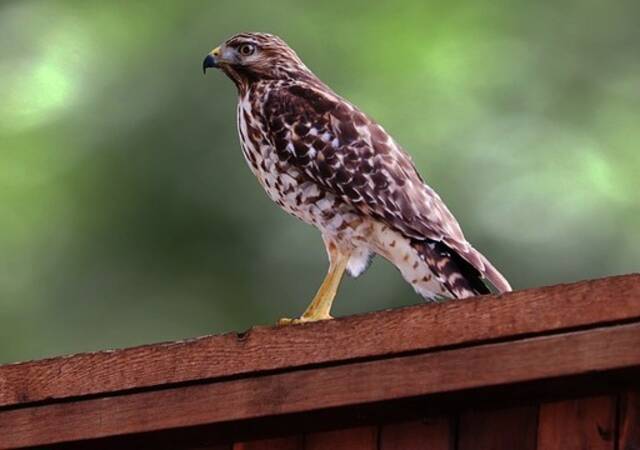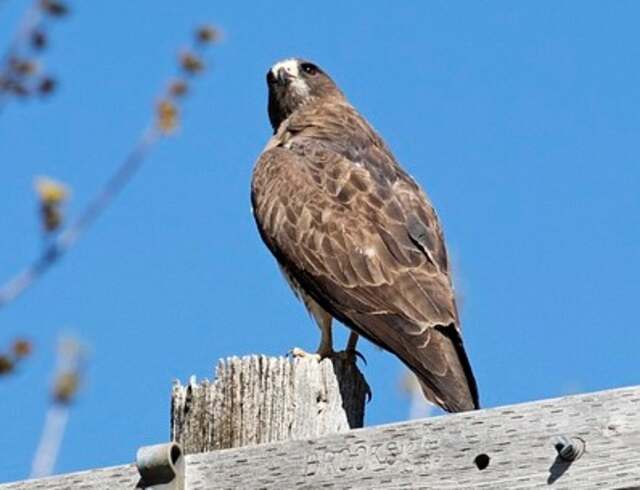How Do Hawks Die? It’s a question that may have crossed your mind while gazing at these majestic birds soaring through the skies.
Well, brace yourself for a feathered rollercoaster as we unravel the surprising fate of these aerial hunters.
From avian adversaries to unexpected hazards, we’ll explore the hidden perils and captivating tales that make hawk mortality a fascinating journey.
Prepare to spread your wings and dive into a whirlwind of discovery!
Table of Contents
- 1 The Life and Death of Hawks: An Introduction
- 2 How Do Hawks Die
- 3 Natural Causes of Death
- 4 Human Causes of Death
- 5 Unusual Causes of Death
- 6 Case Studies: Famous Hawk Deaths
- 7 Preventing Hawk Deaths
- 8 Conclusion
- 9 FAQs: How Do Hawks Die?
- 9.1 How do hawks typically die in the wild?
- 9.2 Are hawks prone to accidents or collisions?
- 9.3 Can hawks die from exposure to pesticides?
- 9.4 Do hawks face threats from hunting by humans?
- 9.5 What role does starvation play in hawk mortality?
- 9.6 Are diseases a significant cause of hawk deaths?
- 9.7 How important is habitat protection for hawk survival?
- 9.8 Can hawks die from collisions with vehicles?
- 9.9 Are hawks at risk from larger predators in their ecosystem?
- 9.10 How can we help minimize threats to hawk populations?
- 10 Author
The Life and Death of Hawks: An Introduction
Hawks are top predators in many ecosystems, playing a crucial role in controlling populations of smaller animals such as rodents, birds, and insects.
These birds of prey are found on all continents except for Antarctica and can range from small species like the sharp-shinned hawk to the larger goshawk.
Hawks are identified by their sharp talons, hooked beaks, and keen eyesight that allows them to locate prey from high above.
Aside from their ecological importance, hawks have also been revered throughout history and mythology.
In Ancient Egypt, hawks were associated with the god Horus and were seen as symbols of royalty and power.
Native American tribes also held hawks in high regard, believing they possessed great wisdom and spiritual insight.
Despite their impressive abilities and cultural significance, hawks face numerous threats to their survival today.
Understanding how these birds die is crucial to developing effective conservation strategies that can help protect them.
The purpose of this article is to explore the various ways in which hawks die – both naturally and as a result of human activity – with a focus on prevention efforts that can be taken to preserve these magnificent birds for future generations.
The Importance of Hawks in Ecosystems
As top predators in many ecosystems, hawks play an important role in maintaining ecological balance. By hunting smaller animals such as rodents and insects, they control populations that might otherwise overgraze or consume too much vegetation.
This helps maintain healthy plant communities that support other wildlife species such as songbirds.
In addition to controlling populations through direct predation, hawks also help keep other species in check through intimidation or competition for resources.
For example, by nesting in tall trees or cliffs, they may discourage other birds from using those areas for nesting themselves.
Overall, the presence of healthy hawk populations is an indicator of a thriving ecosystem. When hawk populations decline, it can have ripple effects throughout the food chain and impact other species as well.
The Purpose of This Article
While hawks are important for maintaining ecological balance, they are also vulnerable to a variety of threats. Understanding how hawks die is crucial to developing effective conservation strategies that can help protect them.
This article will explore the various ways in which hawks die – both naturally and as a result of human activity – with a focus on prevention efforts that can be taken to preserve these magnificent birds for future generations.
By examining different causes of death and understanding the risks that hawks face, we can work towards creating a safer world for these top predators.
How Do Hawks Die
Hawks can die from various factors, including natural causes, predation, accidents, and human activities.
Common causes of hawk mortality include starvation, disease, collisions with vehicles or structures, hunting by larger predators, and exposure to pesticides.
Protecting their habitat, ensuring sufficient food sources, and minimizing human-induced threats are vital for the conservation of these majestic birds of prey.
Natural Causes of Death
Age-Related Deaths
Hawks, like all living creatures, have a finite lifespan. Depending on the species, hawks can live anywhere from 5 to 30 years in the wild.
Older hawks are more susceptible to age-related health issues such as arthritis, heart disease, and cancer. These ailments can lead to a gradual decline in health that eventually results in death.
Many older hawks also become less successful hunters due to declining eyesight and reduced mobility, which can lead to starvation.
Disease and Illness
Disease and illness are common causes of death among hawks. Hawks can contract diseases from other birds or animals or from contaminated food sources.
Common illnesses include avian influenza, West Nile virus, and salmonellosis. Some diseases may cause sudden death, while others may weaken the hawk over time.
Accidents during Hunting or Flying
Hunting is an essential activity for hawks, but it is also dangerous.
Hawks face numerous risks when hunting, including collisions with trees and other objects while chasing prey at high speeds, or fighting with other birds over territory or food sources.
Additionally, some prey animals may fight back when attacked by a hawk, which can cause injuries that lead to death.
Starvation Due to Lack of Prey
Hawks rely heavily on their ability to hunt for their survival; therefore, insufficient prey availability often leads to starvation.
When hunting conditions become unfavorable due to environmental factors such as droughts or habitat changes caused by human activities such as deforestation, it becomes increasingly difficult for hawks to find food, leading them towards starvation.
Overall, natural causes of deaths are unavoidable for most animals, including hawks; however, some may be preventable if humans take steps towards environmental preservation efforts that maintain healthy habitats with abundant food supplies for these beautiful creatures.
Human Causes of Death
Humans have been known to be a significant threat to hawks, and their actions have led to an increase in the mortality rates of these birds.
There are several ways that human actions can lead to the death of hawks.
This section will focus on three primary human causes of hawk death: habitat destruction and loss, hunting and trapping by humans, and collisions with vehicles or buildings.
Habitat destruction and loss
Habitat destruction is one of the most significant human factors contributing to the decline in hawk populations.
Hawks are highly dependent on their natural habitats for nesting, roosting, hunting, and breeding. However, rapid urban development and deforestation have led to extensive habitat loss for hawks.
The removal of trees or other natural vegetation has deprived hawks of suitable nesting sites while leaving them vulnerable to predators.
In addition, contamination from pollution due to industrial activities such as mining has also significantly reduced the availability of suitable habitats for these birds by contaminating food sources such as water bodies.
Hunting and trapping by humans
Hunting and trapping are also major contributors to hawk deaths caused by human actions. Some individuals hunt hawks for sport or illegally capture them for sale in the black market as pets or other forms of entertainment such as falconry.
These practices threaten not only individual animals but entire populations since they could reduce genetic diversity within small populations leading ultimately leading them vulnerable in case of environmental changes.
Traps set up by humans can also lead to accidental captures both young ones that could be taken care off, consequently increasing pressure on rescuers who may not be adequately prepared.
Collisions with vehicles or buildings
Collisions with vehicles or buildings is a common cause behind many hawk deaths attributed directly or indirectly by humans, especially when cities grow too fast without proper planning.
Birds tend not easily recognize glass or reflective surfaces, making it difficult for them to avoid colliding with buildings.
Birds of prey like hawks may collide with high rise buildings and communication masts while hunting in the open sky.
Vehicles like cars or planes can also cause fatal injuries, especially during migration periods, where birds often fly long distances at high altitudes.
Consequently, it is not uncommon for hawks to suffer injuries such as broken wings and bones, leading to death.
Human activities have disastrous effects on hawk populations.
Conservation efforts should prioritize reducing direct human impacts and habitat loss, while seeking alternative ways of minimizing the risks to their survival.
Unusual Causes of Death
While natural causes and human impacts contribute to hawk mortality, there are also some unusual but deadly ways in which hawks can meet their demise.
These unexpected causes of death often involve accidental contact with human-made objects or substances.
Electrocution from power lines or fences
Hawks, like many birds, are prone to accidentally coming into contact with electrical wires and fences.
Power lines and electrical equipment pose a particular threat to hawks, as their large wingspan makes them more likely to come into contact with multiple lines at once.
Electrocution from power lines can cause serious injury or death, often resulting in burns, broken bones, or other physical trauma.
To prevent electrocution deaths of hawks caused by power lines and similar hazards, utility companies have started implementing measures such as installing bird guards on transformers and insulators.
Additionally, working with wildlife protection agencies for education programs aimed at reducing the number of accidents that occur each year is crucial.
Poisoning from pesticides or other chemicals
Pesticides and other chemicals used in agriculture can pose a significant risk to hawks through both direct exposure and indirect effects on prey species.
Many pesticides work by disrupting an organism’s nervous system; so when a hawk ingests an insect that has been exposed to these chemicals, it can suffer drastic neurological symptoms as well.
Pesticide poisoning can cause everything from seizures to respiratory distress in hawks.
To protect the populations of these birds from harmful pesticide exposure, regulators have implemented restrictions on certain types of pesticides while encouraging farmers to use non-toxic alternatives whenever possible.
However, problems still persist due to individuals using unregulated chemicals without proper precautions.
Entanglement in fishing line or other human-made materials
Fishing line is another common hazard that poses risks for many bird species including Hawks which can accidentally become entangled in fishing line, rope, or other human-made materials.
These materials can wrap around a bird’s wings or legs, causing serious injury or even death.
Hawks that become entangled in debris on the ground are also at risk of being attacked by predators or getting hit by cars.
To minimize the number of hawks and other birds that become entangled in these dangerous hazards, it’s important for individuals to properly dispose of fishing line and other materials after use.
Similarly, making sure other forms of trash like plastic bags are not left unattended where they could potentially harm wildlife is essential.
Case Studies: Famous Hawk Deaths
The Death of Pale Male: A Controversial Tragedy in Central Park
Pale Male was a well-known Red-tailed hawk that lived in New York City’s Central Park for over two decades. He gained worldwide fame for his ability to adapt to city life and his successful nesting with several mates.
However, his story took a tragic turn when he suddenly disappeared from the park in 2017.
It was later discovered that he had died from rodenticide poisoning, likely caused by eating rats that had ingested the poison.
The death of Pale Male sparked a controversy over the use of rodenticides in urban areas and raised awareness of the dangers they pose to wildlife.
Advocates called for stricter regulations on their use, while some argued that rats carry diseases that could harm humans and should be controlled at any cost.
Ladyhawk’s Fatal Collision with a Wind Turbine
Ladyhawk was a female hen harrier who lived in England’s Peak District National Park. She was part of an endangered species and had been fitted with a satellite tag as part of a conservation effort to monitor her movements.
In 2019, her signal suddenly disappeared, and her body was later found near a wind turbine on a nearby estate.
An investigation revealed that Ladyhawk had collided with one of the turbines while flying at high speed, causing fatal injuries.
The incident raised concerns about the impact of wind turbines on bird populations, particularly those already struggling due to habitat loss and other human activities.
The Tragic Fate of Washington DC’s Hapless Hawk
In 2016, Washington D.C. residents were captivated by the story of an injured hawk who had taken up residence outside an office building downtown. The bird became known as “DC’s Hapless Hawk” due to her inability to fly more than a few feet off the ground.
Despite her condition, she managed to survive for several years thanks to the care and support of local residents. However, in 2020, tragedy struck when the hawk was hit by a car while trying to cross a busy street.
She died from her injuries soon after. The incident highlighted the challenges faced by urban wildlife and the importance of creating safe habitats and corridors for them to move around in.
The Mysterious Deaths of Hawks in California’s Central Valley
In 2019, dozens of hawks were found dead or dying in California’s Central Valley, an important agricultural region. The cause of death was initially unclear, but it soon became apparent that they had been poisoned with a powerful pesticide called carbofuran.
The incident raised alarm bells among conservationists, who feared that it could signal a resurgence in illegal use of this banned chemical.
It also underscored the vulnerability of raptors such as hawks and their dependence on healthy ecosystems free from harmful chemicals and practices.
Preventing Hawk Deaths
Ways to Reduce Human Impact on Hawk Populations
Hawks face numerous threats from human activities, which can lead to population declines or even local extinctions.
One of the most significant threats is habitat destruction, which can fragment or eliminate the places where hawks hunt and nest.
To reduce this impact, conservation efforts should focus on protecting large areas of intact natural habitats, such as forests, grasslands, and wetlands.
Such efforts may involve acquiring land for conservation purposes or promoting sustainable land-use practices that protect habitat quality and connectivity.
Another way to reduce human impact is through responsible pesticide use.
Many types of pesticides used in agriculture can be harmful to birds, including hawks. Exposure to these chemicals can cause neurological damage, reduced breeding success, and death.
To minimize this impact on hawk populations, farmers and other users of pesticides should adopt integrated pest management practices that rely on non-chemical methods whenever possible.
They should also avoid using pesticides during the breeding season, when hawks are most vulnerable.
Tips for Individuals to Help Protect Hawks
Individuals can also play an important role in protecting hawks from harm. One way is by reporting injured birds to wildlife rehabilitation centers or local authorities who can provide medical attention and care until they are ready for release back into their natural habitat.
Reporting injured birds promptly increases their chances of survival.
Another way individuals can help protect hawks is by reducing their exposure to hunting risks such as electrocution caused by power lines or fences.
To do so, they should take steps like demanding safer power line designs that minimize bird collisions with them or creating bird-safe fences that minimize entanglement risks.
Another important action individuals can take is educating themselves about hawk habitat needs and how their actions can affect these needs negatively or positively—for example, not littering in natural habitats where raptors live, and following responsible ecotourism practices around hawk habitats.
Conclusion
Summary of Key Points Discussed in the Article
Throughout this article, we have explored the various ways in which hawks can meet their demise. We first looked at natural causes of death, such as age-related deaths, disease and illness, accidents during hunting or flying, and starvation due to lack of prey.
We then delved into human causes of death, including habitat destruction and loss, hunting and trapping by humans, as well as collisions with vehicles or buildings.
We examined unusual causes of death for hawks like electrocution from power lines or fences, poisoning from pesticides or other chemicals, and entanglement in fishing lines or other human-made materials.
We also discussed how some notable hawk deaths can impact local communities and raise awareness about conservation efforts.
For example, Pale Male’s popularity in New York City brought attention to preserving urban green spaces for wildlife habitats.
Reiteration of the Importance of Preserving Hawk Populations for a Healthy Ecosystem
Hawks are apex predators that serve a crucial role in maintaining balance within their ecosystems. By controlling populations of prey species such as rodents and insects, hawks help prevent overgrazing and preserve habitats for other wildlife.
However, human activities such as habitat destruction and hunting pose significant threats to hawk populations worldwide.
It is important that we take action to conserve their habitats and minimize negative impacts on these magnificent birds.
There are many ways individuals can help protect hawks: reporting injured birds to wildlife rehabilitation centers; supporting conservation organizations; being mindful when using pesticides; avoiding hunting or trapping these birds; reducing outdoor light pollution which can disorient them when hunting at night etc.
– even though hawks face many challenges throughout their lives – hope lies ahead through increasing awareness about the importance of conserving hawk populations through our actions.
By taking steps to reduce our ecological footprint and promote conservation efforts, we can help ensure that future generations will be able to experience the incredible majesty of hawks in the wild.
FAQs: How Do Hawks Die?
How do hawks typically die in the wild?
Hawks can die from a variety of natural causes, including starvation, disease, and old age. They may also fall victim to predation by larger raptors or other predators in their ecosystem.
Are hawks prone to accidents or collisions?
Yes, hawks can be vulnerable to accidents and collisions. They occasionally collide with vehicles or structures, such as buildings or power lines, which can result in fatal injuries.
Can hawks die from exposure to pesticides?
Yes, hawks are susceptible to the harmful effects of pesticides. Accidental consumption of poisoned prey or direct exposure to pesticides can lead to their death, making it crucial to minimize the use of harmful chemicals in their habitats.
Do hawks face threats from hunting by humans?
While illegal hunting poses a threat to some hawk species, it is generally less common. Hawks are protected by wildlife conservation laws, and efforts are made to educate and enforce regulations to prevent hunting and promote their preservation.
What role does starvation play in hawk mortality?
Starvation can occur during periods of food scarcity, especially when their primary prey becomes scarce. Lack of food can weaken hawks and make them more susceptible to diseases and other threats.
Are diseases a significant cause of hawk deaths?
Diseases, including avian influenza and West Nile virus, can affect hawks and contribute to their mortality. These diseases can be transmitted through infected prey or mosquitoes, impacting their overall population.
How important is habitat protection for hawk survival?
Habitat protection is crucial for hawk survival. Preserving their natural habitats ensures the availability of suitable nesting sites, sufficient prey populations, and undisturbed areas for their migration and foraging activities.
Can hawks die from collisions with vehicles?
Yes, hawks occasionally collide with vehicles, especially when hunting along roadsides or when startled by passing cars. Such collisions can result in fatal injuries, emphasizing the need for cautious driving near hawk habitats.
Are hawks at risk from larger predators in their ecosystem?
Hawks can face predation from larger raptors, such as eagles and owls, as well as from mammalian predators like foxes and coyotes. These predators may compete for resources or directly prey upon hawks, leading to their mortality.
How can we help minimize threats to hawk populations?
Protecting hawks involves creating awareness about their importance, supporting conservation organizations, and advocating for the preservation of their habitats. Additionally, reducing pesticide use, promoting responsible hunting practices, and minimizing habitat destruction are crucial for their long-term survival.

